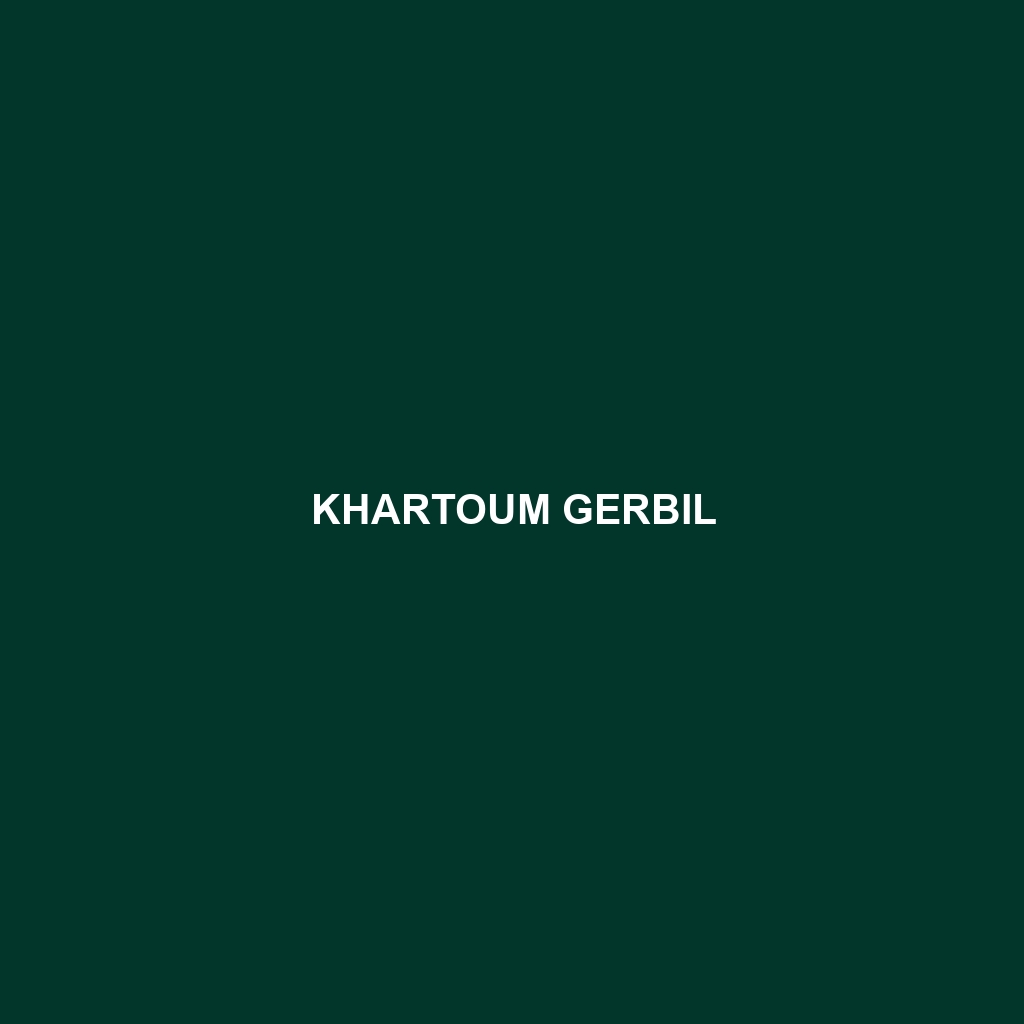Khartoum Gerbil (Scientific Name: Gerbillus pyramidum)
Common Name: Khartoum Gerbil
Scientific Name: Gerbillus pyramidum
Habitat:
The Khartoum Gerbil is primarily found in the arid regions of Sudan, particularly around the Khartoum area. This species thrives in sandy and rocky deserts, preferring areas with sparse vegetation that provide adequate cover and nesting opportunities.
Physical Characteristics:
Khartoum Gerbils are small rodents, typically measuring between 10 to 13 centimeters in length, with tails that may exceed their body length. Their fur is predominantly sandy-brown, which provides excellent camouflage in their desert habitat. They exhibit a distinctively long tail, tufted at the end, and large hind feet adapted for burrowing and locomotion on soft sand.
Behavior:
Known for their nocturnal habits, Khartoum Gerbils are most active during the night. They exhibit social behaviors, often living in small groups or colonies. Their agility allows them to navigate their environment quickly, and they are known for their impressive digging skills as they create extensive burrow systems, which protect them from predators and extreme temperatures.
Diet:
Khartoum Gerbils are primarily herbivorous, feeding on a diet composed of seeds, grasses, and roots found in their desert environment. Their feeding habits are crucial for seed dispersal within their ecosystem, supporting the growth of various plant species.
Reproduction:
The Khartoum Gerbil breeds seasonally, with peak mating periods occurring during the warmer months. A typical litter consists of 2 to 6 offspring, which are born blind and helpless but mature quickly. Parents may exhibit nurturing behaviors, including grooming and providing shelter for their young.
Conservation Status:
Currently, the Khartoum Gerbil is classified as Least Concern by the IUCN Red List. However, habitat destruction and climate changes pose potential threats to their population, necessitating better habitat management and conservation strategies.
Interesting Facts:
Khartoum Gerbils can dig burrows that extend several meters deep, allowing them to access moisture and refuge from extreme temperatures. Their keen sense of smell is vital for finding food and detecting predators in their arid habitat.
Role in Ecosystem:
The Khartoum Gerbil plays a significant role in its ecosystem as both a prey species and a seed disperser. By foraging for seeds and roots, they help maintain plant populations, while their burrowing activities aerate the soil and promote healthier vegetation growth. Their interactions with predators help balance the local food chain.
This species description for the Khartoum Gerbil is structured in HTML format, ensuring it is well-organized, SEO-optimized, and informative for readers seeking information about this particular rodent species.
